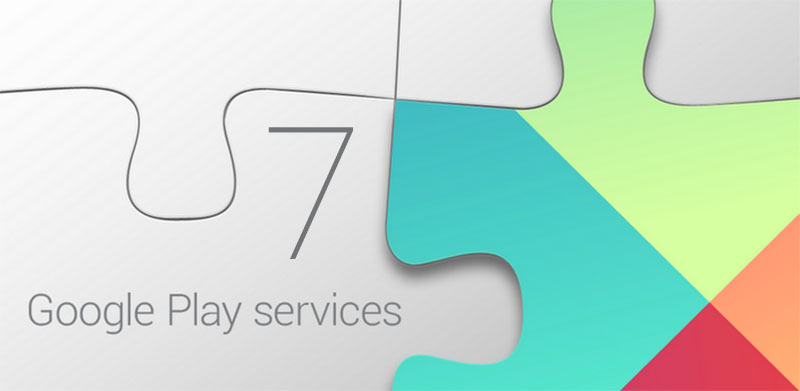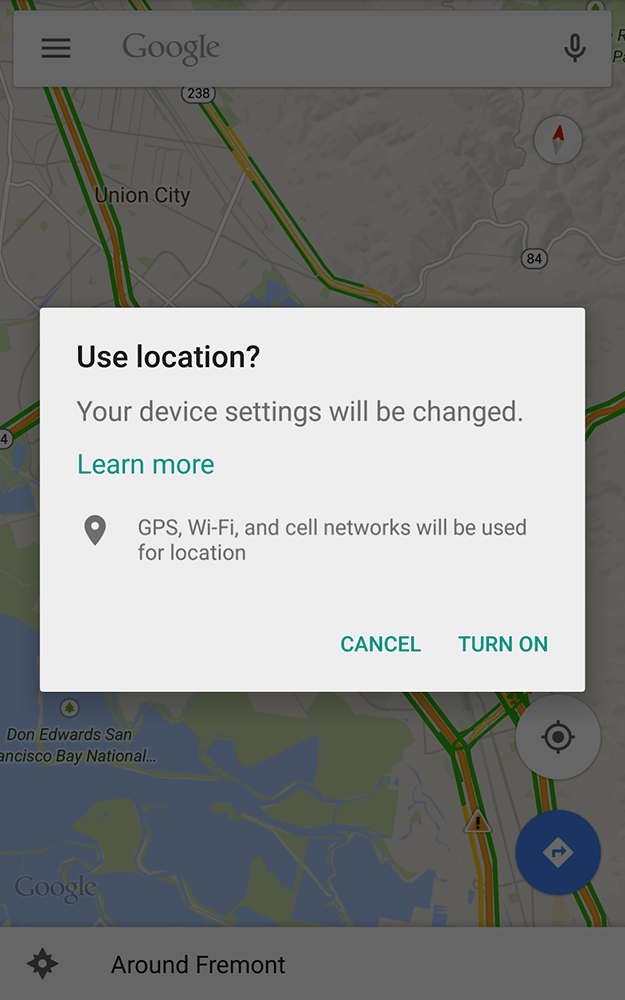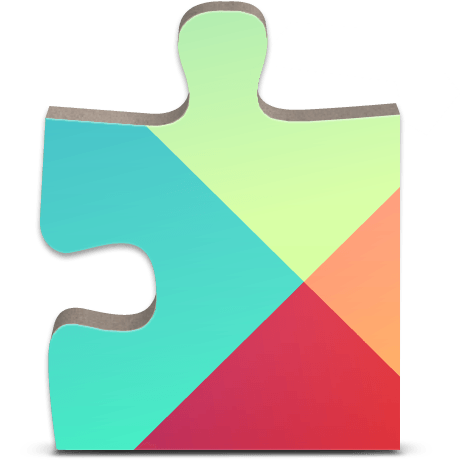Search result

Google Play Services version 7.0 is Now Rolling-out to all Android device worldwide, bringing the latest APIs and fixes to the whole Platform and Google Apps too. Play Services 7.0.8 packs new "Places API" that makes it easy to get details from Google's database of places and businesses. The built-in place picker makes it easy for the user to pick their current place and provides all the relevant place details including name, address, phone number, website, and more.
The update also packs a complete "Google Fit API" integration, New Google Play tools that turns your Android smartphones into a second-screen controls to the game running on your TV. Also, this release has "App Indexing", which lets Google index apps just like websites, enabling Google search results to deep-link directly into your native app.

If you don't want to wait for the update to hit your device, Download the Official APK below. To figure out the right version of Google Play Services for your Android device, go to Settings -> Apps -> Google Play services, and look at the last 3 numbers in the parentheses. You'll see something like -XYY where X is 0 for pre-Lollipop and both 4 and 7 for Lollipop+, and YY is a specific variant id. -738 means you need the APK that has -738 and so on.

Google Play Services 7.0.8 [APK]

Google Play Services version 7.0,96 is Now Rolling-out to all Android devices worldwide, bringing the latest APIs and fixes to the whole Platform and Google Apps too. Play Services 7.0.96 packs new "Places API" that makes it easy to get details from Google's database of places and businesses. The built-in place picker makes it easy for the user to pick their current place and provides all the relevant place details including name, address, phone number, website, and more.
The update also packs a complete "Google Fit API" integration, New Google Play tools that turns your Android smartphones into a second-screen controls to the game running on your TV. Also, this release has "App Indexing", which lets Google index apps just like websites, enabling Google search results to deep-link directly into your native app.

If you don't want to wait for the update to hit your device, Download the Official APK below. To figure out the right version of Google Play Services for your Android device, go to Settings -> Apps -> Google Play services, and look at the last 3 numbers in the parentheses. You'll see something like -XYY where X is 0 for pre-Lollipop and both 4 and 7 for Lollipop+, and YY is a specific variant id. -738 means you need the APK that has -738 and so on.

Google Play Services 7.0.96 [APK]

Google Play Services 7.8 is currently rolling-out with various bug fixes. The update brings some new APIs for Android wear and Android TV along with new libiraries.
Also with this latest Google Play Services 7.8 update, Google has gotten rid of the notification. This means there isn't another notification sitting permanently in your notification drawer that you couldn't get rid of anymore.

The update also brings an updated UI for configuring Trusted Places, the feature that allows your phone to stay unlocked in a certain location. You can now choose on a map the location instead of simply typing it out and it shows the area with a blue dotted circle on the map that is the safe zone. The update also adds a new pull-to-refresh animation in the Google+ app.
If you don't want to wait for the update to hit your device, Download the Official APK below. Make sure to follow the instructions below to get the version needed for your device.
To figure out the right version of Google Play services for your Android device, go to Settings -> Apps -> Google Play services, and look at the last 3 numbers in the parentheses. You'll see something like -XYZ where:* X defines Android version:
0 for Android <5.0
4 and 7 for Android >=5.0
8 for Android TV
* Y defines CPU architecture:
1 for armeabi
3 for armeabi-v7a
4 for arm64-v8a
7 for x86
* Z defines DPI:
0 for universal
2 for 160
4 for 240
6 for 320
8 for 480
Notes:
It seems that -7YZ builds became -4YZ with Google Play services 6.5. If you were on -7YZ before, you should now install -4YZ.
Looks like -8YZ builds are for Android TV.
Examples:
-014 for Android <5.0 armeabi CPU 240 DPI device
-438 for Android 5.0+ armeabi-v7a CPU 480 DPI device
-876 for Android TV x86 CPU 320 DPI device

Google Play Services 7.8.87 [APK]

Application Programming Interfaces (API) serve a valuable purpose in the tech world, as they allow for developers to integrate features from other platforms into their own apps. This serves all sorts of useful purposes, some more apparent than others.
For example, some companies specializing in customized products (phone cases, mugs, etc) can use the Instagram API to let customers upload photos directly from their Instagram account. Or users can check out your upcoming events, find the closest venue on Google Maps, and buy a ticket via a booking service, all conveniently in one app (with multiple API integrations).
But developing APIs is still a bit of an investment, if you spend a lot of time using outdated development methods, such as UI-based API testing. Nowadays you can save a lot of time and money, increasing your development speed to faster deployment with API testing. In this article we'll talk about the benefits of API testing, and you can check out some of the best API testing tools here: https://rapidapi.com/blog/best-api-testing-tools/
How API Testing Saves Time and Money
APIs have become an integral part of the internet, powering business and casual apps, workspace third-party integration, and more. The uses of APIs and their versatility have come a long way, and they've become easier to implement in your apps overall.
Some time ago, traditional API testing was done at the GUI layer. In traditional three-tier architecture, APIs were in the middle layer of an app, governing the business logic and connecting the GUI and Database layers.
The problem this posed was that in order to start testing the API to find bugs in its business logic, testers needed to wait for developers to finish the UI, which of course slowed the process and drove up the cost of bug fixing phases.
Modern solutions such as agile development and automated testing are becoming increasingly popular, so developers are creating their apps with an API-first mentality. So when the business logic is done, a UI can be designed around it. This allows for logic-related bugs to be detected and fixed much earlier, and for a lot less money.
While there will always be a need for some UI testing, particularly for verifying that elements appear on a page and are interactive, API testing is overall faster and more stable than UI-based testing. For example, while testing things like adding and removing database records, automated UI-testing becomes highly time-consuming and repetitive, whereas API testing allows for a much more rapid data manipulation.
And because you can find bugs much earlier in the development process, without needing an UI to be created first, not only is the project finished faster, but requests can be made through the API that wouldn't be allowed through the UI. This is important for finding security flaws.
Software updates are deployed at such a rapid pace today, so developers and testers also need to have a string of rapid feedback, and that's where API testing fits the bill.
API Testing Checklist
Generally the first step in testing RESTful APIs is determining what kind of REST requests are possible through the API, and what sort of limitations each request has. These will typically be explained in the API documentation.
So to test an API, you need to understand the limitations of each REST request, and then discover and verify those limits to ensure that the API will behave exactly the way it should. It's also crucial to make sure that the API cannot be exploited through security flaws, giving malicious entities access to information.
Here's a quick checklist of things to address during API testing:
- The amount of endpoints available
- The HTTP verbs that can be used with the endpoints
- Fields required by the requests
- Validation limits on the fields
- Verbs limited by authorization
- Response codes to verify successful and unsuccessful requests
© 2023 YouMobile Inc. All rights reserved





